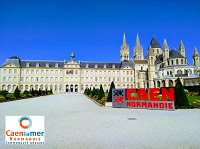Orateur
Description
Highly dense and isospin asymetric matter is partly out of the reach of nuclear laboratories on Earth but comprises the deepest shells of the highly compact astrophysical objects that are Neutron Stars. An entire field of nuclear astrophysics, which includes multi-messenger astronomy, is devoted to exploring dense matter by observing neutron stars from their birth in core collapse supernovae to their deiths in mergers. A boost to this field recently occured with the construction of several gravitational wave detectors that can observe the ripples of space time orginating from the coalescence of black holes and neutron stars.
In this presentation, we discuss the sources gathered in the recent catalogue GWTC-3 of the first three runs of the LIGO-Virgo-KAGRA collaboration. We shall particularly consider the few merger events involving neutron stars and how the imprint of the star’s deformation on the gravitational waveform has taught us about dense matter. We also discuss a very recent event that occured during the first part of the fourth observing run of the LIGO-Virgo-KAGRA collaboration, a merger between a neutron star and a mass-gap black hole, and its impact on our understanding of heavy-element nucleosynthesis.
Finally, we shall discuss what to expect from future observations and the next generation of gravitational wave detectors, the proposed projects of Cosmic Explorer and Einstein Telescope. Particularly, we shall mention some of the challenges we will face in an era of high precision gravitational waves detections.

